Houseplants add another dimension to the inside of our homes — breathing life into our interiors. And if you live in an apartment without access to a backyard, they can lift your home by bringing the outside in.
Besides adding texture and color to your home and improving your sense of well-being, they can also add a natural scent, filling your home with beautiful aromas without relying on artificial chemicals to make it smell sweet.
So if you want to benefit from an array of delightful, mood-uplifting fragrances, here are 9 scented houseplants that will fill your home with perfume.
1. Jasmine
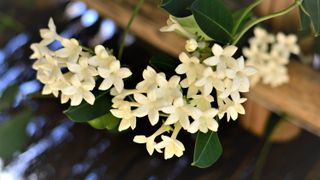
This delicate white flowering plant bursts into bloom in February and is often found growing against a garden trellis, but it can be grown just as successfully indoors — although it might need training with some trellis.
Before snapping one up, check that it’s a fragrant variety. Jasminum polyanthum is a good choice; it’s commonly grown indoors and is known for its sweet aroma.
Typically, Jasmine thrives best in a cool room and doesn’t like the heat. A room below 64.4 F° (18°C) will ensure it flourishes, so avoid hot and steamy kitchens and bathrooms. Jasmine prefers porous soil, but keep checking on it to ensure it doesn’t dry out.
2. Citrus

Often grown outside in warm climates, citrus trees are a glorious, beautifully scented specimen to enjoy inside, too. With dark, green glossy leaves, fragrant white flowers, and bright fruits, these highly attractive plants will create a real talking point while filling your home with a fresh scent.
But be warned; overwatering can damage the plant and lead to its demise, so allow it to dry out between watering. For this reason, it’s best to keep citrus plants in pots that are on the small size, as larger pots will contain more soil that takes longer to dry out. Check that the pot has a drainage hole, which will help avoid root rot.
Citrus trees enjoy a sunny position and can be placed outside during the warmer months, but they don’t appreciate extreme temperatures, so keep them away from outside doors and heaters during colder climes.
Lemon and limes don’t need as much sun as oranges and mandarins to ripen, but whatever your choice, you’ll be guaranteed a zesty scent that will add an extra zing to your home.
Although humans can happily enjoy eating citrus, they are toxic to cats and dogs and should be avoided.
3. Orchids
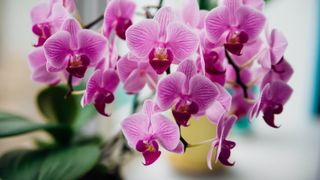
The most delicate of flowers, orchids are a popular houseplant. They are particularly favored for their elegant flowers, their array of colour combinations and long-flowering qualities — making them perfect for gifting. There are also a firm favorite with the ASPCA and are listed in our own list of 11 top pet-safe indoor house plants.
Moth orchids (Phalaenopsis), so-called due to their moth-like appearance, are the most common variety and are the easiest to grow in the home, making them a good choice for beginners or for those interested in growing the best low maintenance plants. Orchid specialist, Matusi Nursery in the US, says Moth Orchids are the best-selling potted flower in the US.
Gardenia describes moth orchids as "sweetly fragrant". For a citrus fragrance try Palaenopsis bellina, or for something spicy, try Phalaenopsis Cornings Violet. If you're a chocolate fan you might enjoy the fragrance of Oncidium Sharry Baby, which can be grown inside and out.
Unlike other houseplants, orchids do not grow in soil and are best grown in potting material that keeps the roots well-aerated and promotes quick drainage. The American Orchid Society says bark chips, stones, tree fern or other loosely packed material are ideal.
One of the quickest ways to kill an orchid is by allowing the plant to sit in a water-logged pot. The roots will be starved of oxygen and will rot. A weekly water is sufficient, as they are happier on the dry side rather than overwatered.
Moth orchids do well with bright, indirect light, as too much sunlight can scorch the leaves. Returning to their roots they originate from humid, tropical regions, so heated homes can be too drying. To compensate, the foliage can be misted every few days, although be careful and avoid spraying the flowers.
Each orchid will have its preferred growing conditions, so keep this in mind if you have multiple varieties, and read the plant label for care instructions. And if you have cats and dogs stick to the Oncidium orchid and the Phalaenopsis orchid, and avoid hybrid varieties which maybe harmful to pets.
4. Herbs
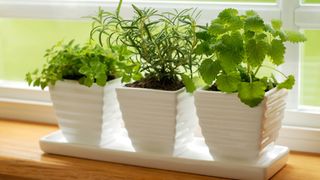
Growing culinary herbs indoors has a welcome dual purpose. They fill your home with an amazing fragrance, and you can add them to your favorite recipes.
Starting your own indoor herb garden is one way to enjoy edible gardening, especially if you lack a yard or outside space for growing.
EatingWell suggests easy-to-grow herbs like basil, chives, mint, oregano, parsley, rosemary and thyme for the best chance of success.
While you can grow your herbs from seeds or cuttings, if you’re a novice, you might prefer buying a ready-made pot from a nursery. Just ensure the pot has good drainage to allow the roots to breathe.
Herbs are sun lovers, so place your plants on a sunny south-facing windowsill, where they can soak up at least six hours of sun per day. Catching enough rays may be more of a problem in winter, so expect growth to be be slower.
These fragrant plants love a drink, but not too much. Check the soil to ensure it stays moist, but be careful not to add too much and drown the roots. If the leaves start to turn yellow, it’s a sign that the plant's been overwatered.
The reward comes when you can harvest your herbs. It’s best to hold back on your enthusiasm and cut or pinch off just a few sprigs at a time. Never remove more than one-quarter of the plant, as it may go into shock.
One sign of your success with growing indoor herbs is that the roots will start to emerge from the pots’ drainage holes. This means it’s time to transplant them into bigger pots. Choose a loose, fast-draining soil as it will match the conditions that native Mediterranean herbs are familiar with.
Many culinary herbs are safe for pets, such as basil, sage, parsley, rosemary, cilantro and lavendar. But if you plan to grow any other herbs, check if they are safe for your furry friends before making a purchase. The ASPCA has an online search tool where you can check which plants are toxic and non-toxic to pets.
5. Pelargonium
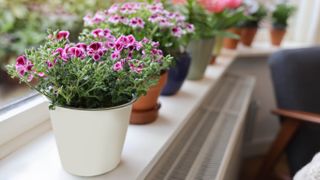
You’ve probably seen pelargoniums grown as bedding plants, in window boxes and hanging baskets, but their flowers, foliage and fragrance can also be enjoyed indoors. Depending on the variety you choose, your home will be filled with the scent of lemon, rose, apple, peppermint or pine.
Often confused with geraniums, from the same Geraniaceae species, pelargoniums are tender perennials and can’t withstand frost. This is why they are best planted in pots in the garden and moved into a greenhouse or conservatory in winter. It also makes them suitable as houseplants, and as they are evergreen, you can enjoy their flowers all year round.
The beauty of pelargoniums is their scent, which is released when the leaves and stems are rubbed. Place them in areas where you will brush past them to enjoy their aroma. Although avoid them if your have pets as the plants essential oils are toxic to cats and dogs.
If you prefer a rose scent, Gardeners World suggests choosing ‘Attar of Roses’, while ‘Bitter Lemon’ is ideal for citrus-lovers, and ‘Lady Plymouth’ combines rose and mint.
When growing in pots, pelargoniums should be planted in a free-draining soil, with a loose and airy mix, such as a peat-free multipurpose compost, to allow the roots to develop. Position the plant in full light shade away from the scorching midday sun.
Pelargoniums need moderate water during spring to summer and occasional water in winter, allowing the compost to dry out between each time. And to keep them looking their best, remove the faded flowers and pinch back the stems as needed.
6. Gardenia

Like the trusty Jasmine, gardenia’s dainty white flowers bring a delicate fragrance to our homes. Although they can be challenging to grow, the beautiful blooms and magnificent scent make it worthwhile.
Indoor gardenias will thrive with cool temperatures, moderate humidity and plenty of bright light. You should keep your plant on a sunny windowsill that gets afternoon shade, with a room temperature of about 64°F (18°C) during the day and 55°F (13°C) at night.
This acid-loving plant does well in soil with a low pH factor. If your soil is too alkaline, try mixing a teaspoon of agricultural sulphur into the planting whole — it will help reduce the soil pH.
To guarantee happy flower buds, the plant’s soil is best kept damp and watered once a week. Under or overwatering may prevent the buds from opening. Applying a layer of mulch will help retain the moisture.
Gardeners' World recommends growing Gardenia jasminoides indoors for its scent, but is best avoided if you have pets as it's toxic to both cats and dogs.
7. Hyacinth

There’s nothing subtle about a hyacinth. These bright, bold, spring-blooming perennials fill our homes with colour and fragrance. Apart from growing in pots, these beautiful blooming bulbs can be cut and added to flower vases.
The indoor lifespan of a hyacinth will be much shorter than if grown outside, but with the right conditions, you’ll be able to enjoy them for a couple of weeks.
If planting your bulbs rather than buying your hyacinth ready-potted, the first step is to chill the bulbs for six to 10 weeks. Then, plant them in a pot with good drainage, using a well-draining, all-purpose compost with a neutral pH level. The bulbs don’t need to be deeper than 4-5 inches below the soil. Finally, moisten the soil, cover the pots with a dark material (a black bin liner is perfect), and place them in a cool place for 10-11 weeks. Then check on your hyacinths every few weeks to see if they need a small drink.
Once you see sprouts emerging from the soil, bring them out of the dark. The Spruce advises keeping them out of direct sunlight until the sprouting leaves are two inches long, them moving them into indirect sunlight until the bulbs begin to show color when they can finally be positioned in full sun.
Be careful when planting hyacinth bulbs if you have cats and dogs. All parts of the plant are toxic but the bulb contains the highest level of toxins.
One of the best things about houseplants is that it's fairly easy to take cuttings and grow on new plants. You might be interested in 5 houseplants you can propagate easily and how to do it.
Houseplants can certainly fill lots of purposes in our homes, many of them can also act as screening plants to provide privacy in window spaces. But if you'd prefer the fragrance without the plants you could try the AromaDream diffuser.
8. Eucalyptus
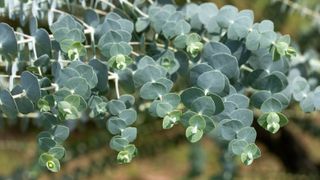
Eucalyptus doesn't have fragrant flowers, which we tend to associate with scented plants, but instead, its foliage gives off the aroma. It has a pleasant mint-like smell and is strongly aromatic, similar to rosemary.
I've previously grown an Eucalyptus in my backyard, and it was certainly a rampant grower and had to be pruned back regularly to keep it under control. So, I was interested to find out how easy it is to grow as an indoor houseplant.
The New York Botanical Garden describes it as a "challenging houseplant", but don't let that put you off, as its blue-gray circular leaves are beautiful and will add an attractive aesthetic to your home. But be careful what you choose, or you could end up with a tree inside your home. Gardening Know How recommends Argyle Apple of Silver Dollar varieties, as they are shorter versions that work well indoors.
However, if you are looking for a low-maintenance houseplant, look away now. The New York Botanical Garden says it "demands plentiful sunlight", at least six hours a day, and won't do well as a low-light living houseplant.
It will also need a good water so that you see water coming out the bottom of the drain hole in its pot, and then leave it to dry out before watering again. Although, be careful to ensure that water can drain away from the roots.
Eucalyptus is sensitive to temperature change, so avoid placing it near a draughty doorway or window. It will do well in a temperature in the range of 65-75°F, but this needs to be lowered to between 45 to 50°F in the winter.
9. Hoya
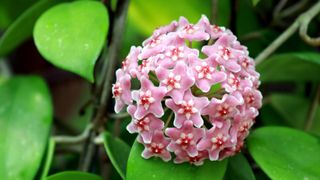
Hoyas are cultivated for their aromatic scent and attractive waxy foliage, which is why they are often referred to as the wax plant. They come in white, pink, and purple with various leaf shapes and boast star-shaped flowers that are sweet-smelling and, depending on the variety, can smell of chocolate, vanilla, or butterscotch.
Hoya Carnose ‘Tricolor’ is often referred to as the honey plant, and according to The House Plant Shop, the leaves change color according to how much light they receive. “Turning pink is this houseplant’s way of showing you how well you are caring for it,” it says.
They do best in very bright light and can handle direct sun; although they can survive in low-light conditions, they won’t grow as quickly, and their flowers will be less abundant.
The leaves will hold onto water, so let the plants dry out well before watering, but give them an extra drink when they are flowering. They prefer a temperature of 70 to 80°F in the daytime and a cooler 60 to 65°F at night.
More from Tom's Guide
- Worried you've overwatered your plants? Discover 5 tips to save an overwatered plant
- Need some plants that will survive the heat? 7 Plants that will thrive in a bathroom?
- Stuck for time ? Try the 7 best low maintenance plants for easy care
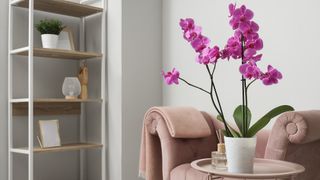







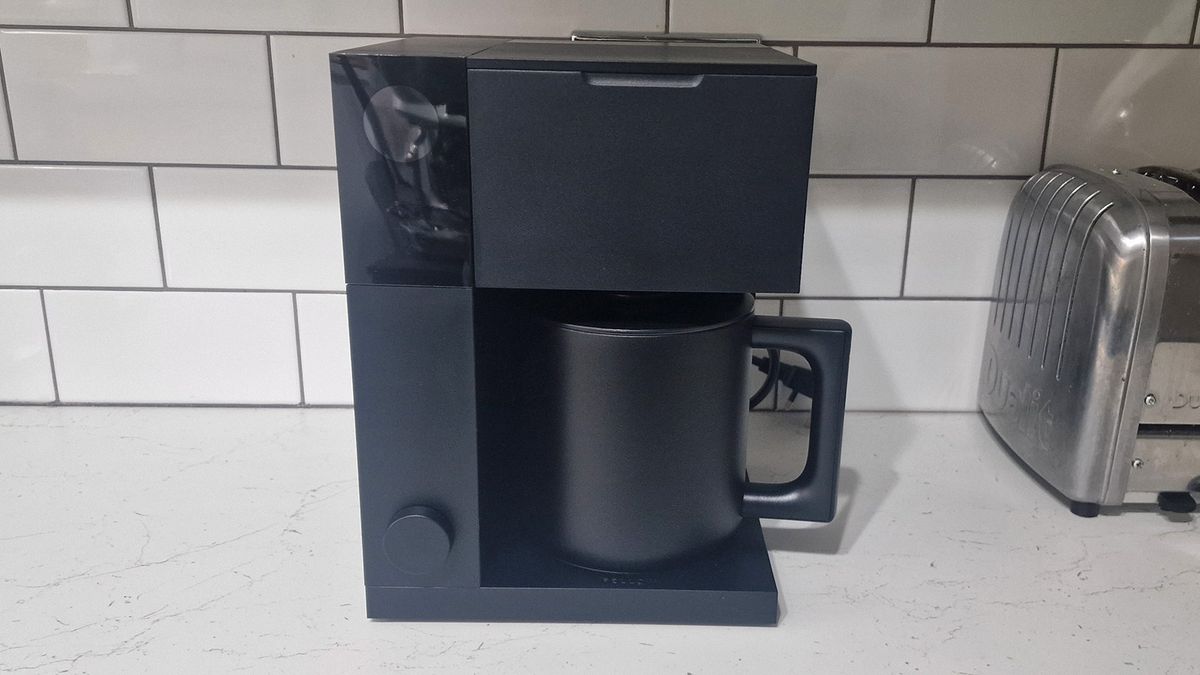












 English (US) ·
English (US) ·